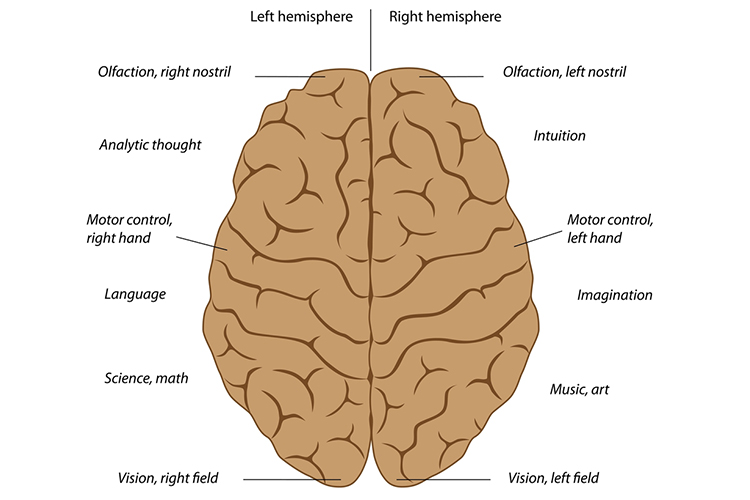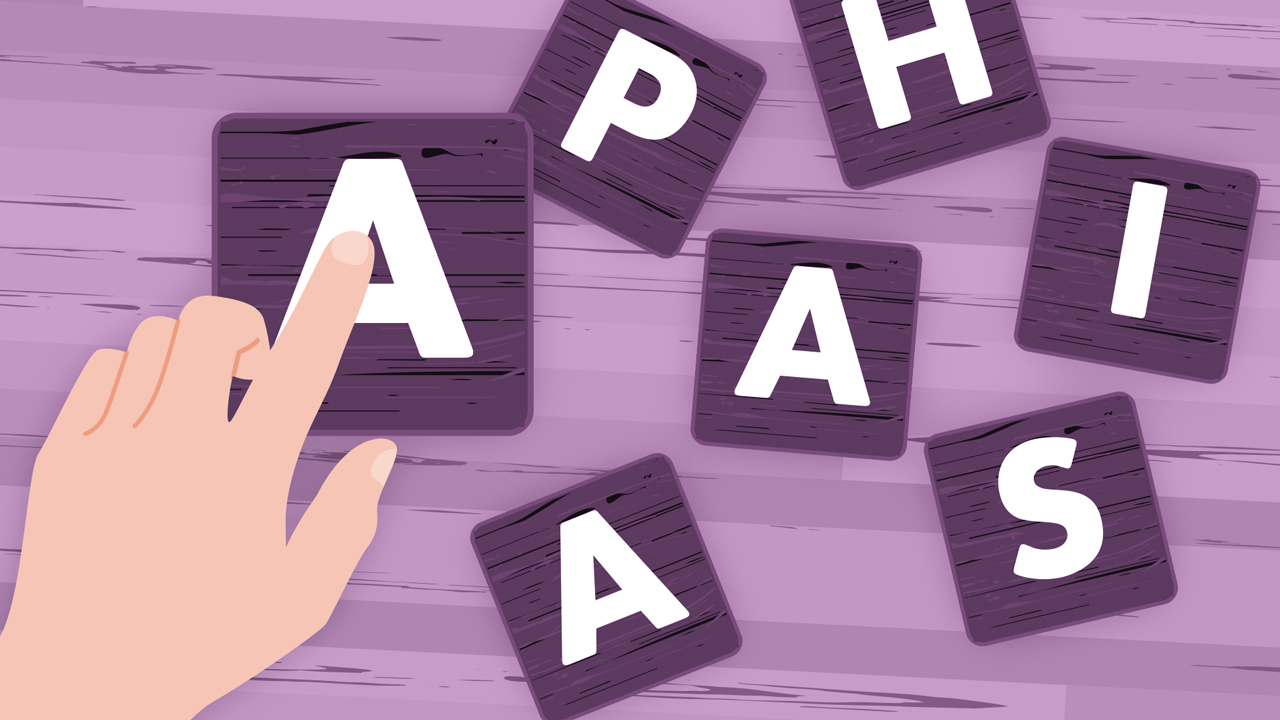Aphasia is a common language disorder occurring post-stroke, affecting one-third of all patients diagnosed with stroke (Stroke Association 2023a).
Communication is a complex neural process. It involves a careful sequence of expression, muscle movements, breathing, speaking and comprehension. When a patient who has had a stroke experiences speech difficulty, word-finding difficulty, or speaks with made-up or inappropriate language, they are highly likely to be experiencing aphasia (American Stroke Association 2024).
Key Types of Aphasia
- Expressive aphasia/Broca’s aphasia (non-fluent) is caused by damage to the frontal regions of the left brain hemisphere. Speech production is halting and effortful. In severe cases, speech is reduced to single words. However, comprehension remains intact.
- Receptive aphasia/Wernicke’s aphasia (fluent) is where speaking itself is not difficult, but the individual produces jargon and nonsensical words and phrases rather than meaningful sentences. Comprehension is poor.
- Anomic aphasia: The individual experiences word-finding difficulty; they use non-specific nouns but are able to describe the intended word. Comprehension is generally good.
- Global aphasia is severe impairment of both receptive and expressive language, usually associated with a large left-hemispheric lesion.
- Primary progressive aphasia is degenerative, causing a gradual loss of language function.
(American Stroke Association 2024; Stroke Association 2023b)

The left cerebral hemisphere of the brain is typically involved in the process of speech. Damage to these areas often causes communication problems (Le et al. 2024).
In addition to aphasia, a person’s communication abilities can be affected in other ways after a stroke.
One example is dyspraxia, a condition that affects the coordination of messages from the brain to the muscles associated with speech. This results in a general lack of coordination or difficulty moving the mouth and tongue to form speech (ABIOS 2021).
Similarly, a condition known as dysarthria can weaken and paralyse the muscles involved with speech, causing a more general slurring of words (Mayo Clinic 2024).
Signs and Symptoms of Aphasia
Aphasia might cause:
- Spoken language expression impairments
- Anomia (difficulty finding words)
- Jargon (fluently generating sentences that have no semantic meaning)
- Neologisms (creating words that are not meaningful or recognisable to others)
- Semantic paraphasias (substituting words, e.g. saying ‘table’ instead of ‘bed)
- Telegraphic speech (the omission of function words such as ‘the’, ‘of’ and ‘was’)
- Lack of awareness of own speech errors
- Grammatical errors
- Halting or effortful speech
- Speaking in single words or fragmented phrases
- Syntax errors (e.g. using words in the wrong order)
- Spoken language comprehension impairments
- Difficulty understanding speech, or needing extra time to do so
- Difficulty understanding complex grammar
- Difficulty understanding long or rapid speech
- Difficulty understanding spoken information without accompanying visual context (e.g. the radio or phone calls)
- Difficulty understanding language that isn’t literal (e.g. sayings)
- Lack of awareness of own comprehension errors
- Agraphia (written expression impairments)
- Difficulty writing, typing or copying letters, words and sentences
- Writing only single words
- Substituting incorrect words or letters when writing
- Writing or spelling non-meaningful words or syllables
- Using incorrect grammar or syntax when writing
- Alexia (reading comprehension impairments)
- Difficulty recognising words by sight
- Difficulty comprehending writen material
- Misinterpreting the meaning of written words
- Difficulty comprehending function words such as articles, prepositions and pronouns.
(ASHA 2022)
How is Aphasia Treated?
Aphasia treatment should be individualised to address the specific needs and goals of each patient. It should take a holistic, person-centred approach. Treatment can either be restorative (aiming to improve or restore impaired function) or compensatory (aiming to help the person compensate for difficulties that cannot be retrained) (ASHA 2022).
Aphasia Communication Tips, Care and Management
When caring for a person with aphasia, consider implementing some of the tips below, as they will assist the patient to communicate more easily.
- Reduce background noise and distractions
- Use clear and simple language
- Speak in short sentences
- Allow plenty of time for the person to respond
- Augment the message with other communication modalities, e.g. gestures, facial expressions and pictures
- Converse using adult language (don’t talk down to the person)
- Gain the person’s attention first before commencing a conversation
- Keep your voice at a normal, stable volume
- Repeat back what you think the person said/meant for confirmation.
(NAA 2023; American Stroke Association 2022)

Test Your Knowledge
Question 1 of 3
How many patients diagnosed with stroke experience aphasia?
Topics
Further your knowledge
References
- Acquired Brain Injury Outreach Service 2021, Understanding Dyspraxia After Acquired Brain Injury, Queensland Government, viewed 11 June 2025, https://www.health.qld.gov.au/__data/assets/pdf_file/0021/674040/dyspraxia_fsw.pdf
- The American Speech-Language-Hearing Association 2022, Aphasia, ASHA, viewed 11 June 2025, https://www.asha.org/practice-portal/clinical-topics/aphasia/
- American Stroke Association 2022, Aphasia: Communicating Through Barriers, American Heart Association, viewed 11 June 2025, https://www.stroke.org/en/about-stroke/effects-of-stroke/cognitive-and-communication-effects-of-stroke/stroke-and-aphasia/aphasia-communicating-through-barriers
- American Stroke Association 2024, Types of Aphasia, American Heart Association, viewed 11 June 2025, https://www.stroke.org/en/about-stroke/effects-of-stroke/cognitive-and-communication-effects-of-stroke/types-of-aphasia
- Le, H, Lui, F & Lui, MY 2024, ‘Aphasia’, StatPearls, viewed 11 June 2025, https://www.ncbi.nlm.nih.gov/books/NBK559315/
- Mayo Clinic 2024, Dysarthria, Mayo Clinic, viewed 11 June 2025, https://www.mayoclinic.org/diseases-conditions/dysarthria/symptoms-causes/syc-20371994
- National Aphasia Association 2023, Aphasia Communication Tips, NAA, viewed 11 June 2025, https://www.aphasia.org/aphasia-resources/communication-tips/
- Stroke Association 2023a, Communication Problems, Stroke Association, viewed 11 June 2025, https://www.stroke.org.uk/effects-of-stroke/communication-problems
- Stroke Association 2023b, Types of Aphasia, Stroke Association, viewed 11 June 2025, https://www.stroke.org/en/about-stroke/effects-of-stroke/cognitive-and-communication-effects-of-stroke/types-of-aphasia
 New
New 

